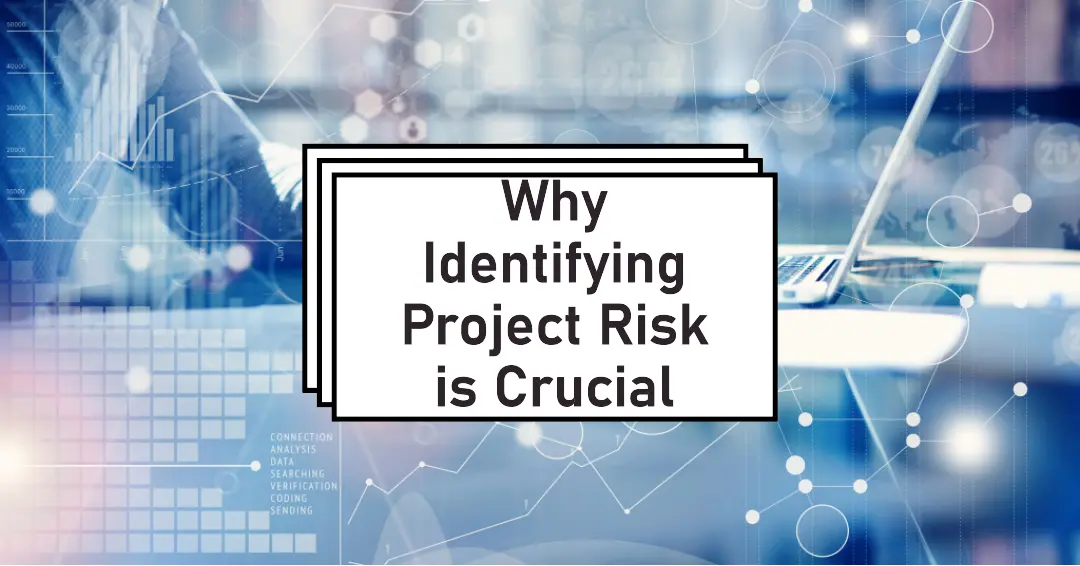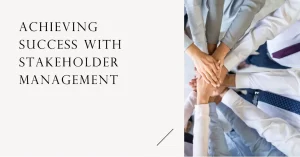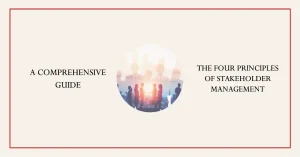To find out how Artificial Intelligence is changing the Project Management landscape, you may enjoy reading this article https://www.shaunstoltz.com/did-artificial-intelligence-just-change-everything-about-project-management/
I. Introduction
Hey there! If you’ve ever managed a project, you know that it can sometimes feel like navigating a minefield. One wrong move and – BOOM – you’re dealing with delays, cost overruns, and unhappy stakeholders. If only there was a way to predict and avoid these potential pitfalls, right? Well, that’s where the magic of identifying project risks comes in!
In today’s post, we’re going to dive deep into the world of project risks and explore why it’s so crucial to identify them early on. Not only will this help you better manage your projects, but it can also save you from the headaches and heartaches that come with unexpected surprises. So, buckle up and join me on this journey as we uncover the benefits and implications of identifying project risks – and learn how to master this essential aspect of project management. Let’s go!
II. Understanding Project Risk
Before we dive into the nitty-gritty, let’s take a moment to understand what we mean by “project risk.” In simple terms, a project risk is any uncertain event or condition that, if it occurs, can impact the project’s objectives. These objectives could be related to time, cost, quality, or even team morale. Now that we’re on the same page let’s explore the different types of project risks and what factors contribute to them.
A. Types of project risks
Project risks come in all shapes and sizes, and it’s essential to be aware of them so that you can tackle them effectively. Here are some common categories of project risks:
- Technical risks: These are related to the technology, tools, or techniques used in the project. For example, your team might struggle to adapt to a new software or face compatibility issues with existing systems.
- Financial risks: These risks deal with budget constraints, cost overruns, or financial losses. A sudden change in currency exchange rates or a supplier hiking their prices can cause financial risks.
- Legal and regulatory risks: These involve compliance with laws, regulations, and industry standards. Missing a crucial permit or failing to comply with data privacy regulations can lead to hefty fines and legal troubles.
- Human resources risks: These risks arise from team dynamics, personnel issues, or lack of skilled resources. Unexpected employee turnover or conflicts within the team can derail a project.
- External risks: These are risks outside your control, such as natural disasters, political instability, or market fluctuations. A sudden change in government policy or a competitor’s breakthrough innovation can impact your project.
B. Factors that contribute to project risks
Now that we’ve explored the different types of risks, let’s look at some factors that can contribute to project risks:
- Complexity: The more complex a project is, the more opportunities there are for things to go wrong. Complex projects often involve multiple teams, technologies, and stakeholders, which can lead to communication breakdowns and unforeseen challenges.
- Lack of experience: If your team is inexperienced or lacks knowledge in certain areas, they may not be able to foresee potential risks or know how to mitigate them effectively.
- Inadequate planning: Poor planning can lead to unrealistic deadlines, budget constraints, and overlooked risks. Detailed and thorough planning can help you identify potential risks early on.
- Poor communication: A lack of clear communication between team members, stakeholders, and clients can lead to misunderstandings, missed opportunities to identify risks, and inadequate risk responses.
- Unpredictable factors: Some risks are simply unpredictable and difficult to anticipate. These could include sudden market changes, natural disasters, or political events.
Now that we’ve built a solid understanding of project risks and their contributing factors, we’re ready to dive into the benefits of identifying them and the consequences of neglecting this essential aspect of project management. Stay tuned!
III. Benefits of Identifying Project Risks
Imagine walking into a room blindfolded. You’d probably bump into a thing or two, right? Identifying project risks is like taking off that blindfold, giving you a clear view of potential obstacles and helping you navigate your project more effectively. Let’s check out some of the key benefits of identifying project risks:
A. Improved project planning
When you’re aware of the risks that lie ahead, you can plan better! By identifying potential roadblocks, you can set more realistic deadlines, allocate resources efficiently, and create contingency plans. This proactive approach will make your project more resilient and better equipped to handle surprises.
B. Better resource allocation
Knowing the potential risks allows you to allocate your resources – like time, budget, and team members – more strategically. You can direct your efforts towards the riskier areas of your project, ensuring that you’re investing your resources where they’re needed most.
C. Enhanced decision-making
Having a clear understanding of your project’s risks helps you make informed decisions. You’ll be able to weigh the pros and cons, consider the potential consequences, and choose the best course of action to mitigate those risks. This leads to better outcomes and increased chances of project success.
D. Increased likelihood of project success
When you identify and manage risks effectively, you’re setting your project up for success. You’ll be better prepared to tackle challenges, prevent delays, and keep your project on track. In short, identifying project risks can be the secret sauce for delivering a successful project!
E. Greater stakeholder confidence
When stakeholders see that you’re proactive in identifying and addressing risks, they’ll have more confidence in your project and your team. This trust can lead to stronger relationships, increased support, and a more collaborative environment.
So, there you have it – some compelling reasons to prioritize risk identification in your projects. But what happens if you don’t? In the next section, we’ll explore the consequences of neglecting this essential aspect of project management. Don’t worry, though – we’ll also share some best practices to help you avoid these pitfalls. Stay with me!
IV. Consequences of Neglecting Project Risk Identification
We’ve seen how identifying project risks can be a game-changer, but what about the flip side? If you’re not proactive about risk identification, you could be setting yourself and your project up for some serious challenges. Let’s take a look at some of the consequences of neglecting project risk identification:
A. Unforeseen delays and setbacks
When you don’t identify risks early on, you’re more likely to be caught off guard when they materialize. These surprises can lead to delays and setbacks that throw your project off schedule. And we all know how important it is to meet those deadlines, right?
B. Inaccurate budgeting and cost overruns
Failing to identify and plan for project risks can lead to inaccurate budget estimates and cost overruns. You might find yourself scrambling to find additional funds or cutting corners to make up for the unexpected expenses. This can jeopardize the quality of your project and leave you and your team feeling stressed.
C. Lowered team morale and productivity
When risks aren’t identified and managed, they can create chaos and confusion within the team. This can lead to frustration, lowered morale, and reduced productivity – a recipe for disaster! A proactive approach to risk identification can help you maintain a positive and motivated team, even when challenges arise.
D. Reduced chances of project success
If you’re not prepared for potential risks, they can derail your project, causing delays, cost overruns, and dissatisfied stakeholders. Ultimately, this can reduce your chances of project success and hinder your ability to deliver the results you set out to achieve.
E. Damaged reputation and client relationships
When you neglect risk identification, you’re not just jeopardizing your project – you’re also putting your reputation and client relationships at risk. Clients expect you to manage projects effectively and deliver the desired results. If you’re consistently plagued by unexpected challenges and setbacks, you’ll struggle to maintain their trust and confidence.
Now that we’ve seen the risks of neglecting risk identification, let’s move on to some best practices for identifying and managing project risks effectively. In the next section, we’ll arm you with the tools and techniques you need to tackle project risks head-on and set your projects up for success. Keep reading!
V. Best Practices for Identifying Project Risks
So, we’ve seen the benefits of identifying project risks and the consequences of neglecting this crucial aspect of project management. Now it’s time to put on our superhero capes and learn how to tackle project risks like a pro! Here are some best practices for identifying project risks:
A. Risk management planning
Before you can identify risks, you need a plan. Start by developing a risk management plan that outlines your approach to risk identification, analysis, and response. This plan will serve as a roadmap for you and your team as you navigate the risky waters of project management.
B. Risk identification techniques
There are several tried-and-true techniques for identifying project risks. You don’t have to use them all, but it’s good to have a few in your arsenal. Here are some popular methods:
- Brainstorming sessions: Gather your team and stakeholders for a good old-fashioned brainstorming session. Encourage everyone to think creatively and share their thoughts on potential risks. You might be surprised at the insights that emerge!
- Expert interviews: Consult with experts in your field or team members who have experience with similar projects. Their knowledge and experience can help you identify risks that you might have overlooked.
- Checklists and historical data: Review past projects and industry reports to identify common risks and trends. This can help you spot potential risks and learn from others’ experiences.
C. Prioritizing and categorizing risks
Once you’ve identified potential risks, it’s time to prioritize and categorize them. This will help you focus your efforts on the most significant risks and develop targeted risk response strategies. Use criteria like likelihood, impact, and urgency to rank your risks and group them into categories like technical, financial, or external.
D. Developing a risk response plan
Now that you’ve identified and prioritized your risks, it’s time to develop a risk response plan. This involves deciding on the most appropriate actions to minimize the impact of each risk or take advantage of opportunities that may arise. Your risk response plan should outline the steps you’ll take, the resources you’ll need, and the roles and responsibilities of your team members.
E. Continuous monitoring and updating
Risk identification isn’t a one-and-done process. It’s essential to monitor your project continuously, revisit your risk assessments, and update your risk response plan as needed. This will help you stay agile, adapt to changing circumstances, and keep your project on track for success.
By following these best practices, you’ll be well-equipped to identify and manage project risks effectively. But don’t just take my word for it! In the next section, we’ll explore some real-life case studies that demonstrate the power of proactive risk identification. Keep reading to learn from the successes and failures of others, and apply those lessons to your projects.
VI. Case Studies: Success and Failure in Identifying Project Risks
Learning from real-life examples can be incredibly valuable. Let’s take a look at two case studies – one that effectively identified and managed project risks, and another that suffered due to inadequate risk identification. These stories will not only illustrate the importance of risk identification but also inspire you to apply these lessons to your projects.
A. A project that effectively identified and managed risks
Meet Jane, a project manager at a software development company. Jane was tasked with overseeing a complex project that involved developing a new mobile app for a high-profile client. Jane knew that the stakes were high, and she was determined to deliver a successful project.
To ensure a smooth process, Jane and her team held a series of brainstorming sessions and consulted with industry experts to identify potential risks. They then prioritized and categorized these risks, creating a comprehensive risk response plan.
Throughout the project, Jane’s team faced several challenges, including technical issues, shifting client requirements, and a key team member falling ill. However, because they had identified these risks early on and had a plan in place, they were able to adapt quickly and address the challenges head-on. The result? A completed project on time and within budget, a thrilled client, and a proud project team.
B. A project that suffered due to inadequate risk identification
Now let’s meet John, a project manager at a construction company. John was responsible for overseeing the construction of a new office building. John was confident in his team’s abilities and believed that they could handle any issues that arose.
Unfortunately, John’s overconfidence led to a lack of risk identification and planning. As the project progressed, the team encountered multiple setbacks, including unexpected soil conditions, permitting delays, and supplier issues. Without a risk response plan in place, these challenges snowballed, resulting in significant delays and cost overruns.
The project’s completion was ultimately delayed by several months, and the budget exceeded the original estimate by a considerable margin. The client was unhappy, and John’s company’s reputation took a hit.
These case studies demonstrate the significant impact that risk identification can have on a project’s success or failure. By being proactive and diligent in identifying project risks, you can avoid the pitfalls that John’s team faced and set yourself up for success like Jane’s team.
Now that we’ve seen the power of risk identification in action, let’s wrap things up and recap what we’ve learned.
VII. Conclusion
We’ve come a long way on our journey through the world of project risks, and I hope you’ve found this exploration as enlightening as I have! To recap, we’ve delved into the importance of identifying project risks, the benefits of doing so, and the consequences of neglecting this essential aspect of project management.
We’ve also explored various types of project risks, factors that contribute to them, and best practices for identifying and managing risks effectively. Finally, we’ve examined real-life case studies to see how proactive risk identification can make a significant difference in the success of a project.
By now, you should have a solid understanding of why identifying project risks is crucial, and I hope you’re feeling inspired to apply these lessons to your projects. Remember, the key to success is being proactive, diligent, and adaptable when it comes to managing risks. With the right approach and mindset, you’ll be well on your way to delivering successful projects and making a positive impact on your team, your clients, and your organization.
Thank you for joining me on this adventure, and I wish you the best of luck in your risk management journey! As you navigate the sometimes-treacherous waters of project management, remember to stay vigilant, learn from your experiences, and continually strive for improvement. Together, we can conquer project risks and achieve great things!
Find out more about Shaun Stoltz https://www.shaunstoltz.com/about/
This post was written by an AI and reviewed/edited by a human.



